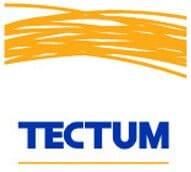Singular
Projects
More than 80 Years of Experience
Unique Projects
Our technical department, made up of architects and engineers, works in coordination with the client to shape the aesthetic idea required by it. We look for the appropriate shape for the tensile structures, the textile roof or the textile façade, we create the design, we search for the appropriate fabric and we optimize the structure, design and foundation. We manufacture the membranes, structures and other tensioning accessories and finally we install it.
The textile material begins to demonstrate its possibilities compared to conventional materials: in the construction of fixed textile covers to cover large spaces for multiple uses, exhibitions, public squares, parks, marinas, bullrings, airports, shopping and leisure centers.
Contact us to give you more information about it. Find out why our clients guarantee the quality of our projects.
Our technical department, made up of architects and engineers, works in coordination with the client to shape the aesthetic idea required by it. We look for the appropriate shape for the tensile structures, the textile roof or the textile façade, we create the design, we search for the appropriate fabric and we optimize the structure, design and foundation. Finally, we manufacture the membranes, structures and other tensioning accessories.
The textile material begins to demonstrate its possibilities compared to conventional materials: in the construction of fixed and folding textile covers, applicable to the covering of large spaces for multiple uses, exhibitions, nautical bases, bullrings, airports, shopping centers and entertainment.
Contact us to give you more information about it. Find out why our clients guarantee our highest quality.
Contact Us
Contact Us Our specialists will be able to advise you to propose the best solution for your project. We have more than 80 years of experience in the manufacture of tarpaulins, awnings, marquees and textile architecture.
Leaders in Industrial Solutions
More about Textile Architecture
Trust in our good work, as thousands of satisfied customers have done with what we do.

- Textile facade: a way to combine aesthetics with energy savings, resulting in climatic comfort and protection using different fabrics.
- Textile cover: the most appropriate aesthetic solution if rapid assembly is required. In addition, they have the added value of reducing costs.
- Sail awnings: elegance does not have to be left aside, this is an option to achieve shade without forgetting aesthetics. Tensile structures that prevent the accumulation of rainwater.
- Singular projects: we carry out textile architecture works in parks, open spaces, squares, buildings and singular events.
The most common forms are the following:
- Hyperbolic paraboloids. It is a tensile structure created from converging straight lines, and as a result a combination of the following is created a combination of surfaces parabolas and hyperbolas. They are often compared to “a saddle”. This type of tensile structures is designed for multi-sport courts, although its application can be used in other outdoor spaces thanks to its multifunctionality.
- Parallel valleys. We are talking about concave tensile structures to be placed outdoors. We can say that they have the function of “umbrellas” since they protect the space they cover from atmospheric phenomena.
- Conoids and inverted conoids: a type of structure widely used in the field of tensile textile architecture. They stand out for their visual impact and for the entry of light through the oculus, which is achieved by placing a highly translucent membrane or another type of material such as EFTE, a thermoplastic polymer whose characteristics include total transparency, high resistance to heat, ultraviolet rays and corrosion. The beauty of the inverted figures makes them a very popular element for exterior ornamentation.
- Wire mesh. A mesh of tensioned cables is designed to form the supporting structure on which the membranes are installed.
Textile architecture can cover the same functions as a conventional building, with some advantages:
- Its own weight, less than 1 kg/m2, together with the strength and flexibility of the material, makes it possible to obtain extraordinarily light complete roofs, without intermediate purlins.
- The light transmission coefficient, which takes advantage of natural light without the need to use glass.
- The speed of manufacture and installation. Materials can be disassembled and recycled.
- The aesthetic image, which is perfectly adapted to the project.
The versatility and elegance that tensile textile structures offer in outdoor locations have made them fashionable for sophisticated outdoor surfaces.
In general, they are made with PVC or PTFE materials (very similar to polyethylene) that successfully fulfill their function and at the same time allow them to be molded for the creation of unique designs and to develop all the creative potential. Tensile textile structures are manufactured based on the behavior of the material of which they are composed. To understand these compositions that are born thanks to computers and then materialize, it is important to design the space where they will be installed.
On the other hand, within tensile structures, they have risen as number one in outdoor textile compositions due to their durability, firmness and resistance thanks to the placement of a structural metal base.
Do you have one or a project in mind? Tell us about it and we will make it happen. Moñita Pulido in Tenerife are experts in textile architecture with a long professional experience that supports us,call us!
There are different types of tensile structures depending on the shape of the surface or the support conditions. We inform you about some types:
– Tensioned synclastic tensile surface tensile structureis supported along the contour. In order to carry out this specific work, nets with regular meshes are required, either triangular or rectangular in shape, or it can also be done with fabrics formed by narrow and long strips that are sewn or glued in such a way that they act as small suspended cables. If it is desired to create an undulating surface to give more style to the structure, then it should be supported by arches or interior cables.
– Tensile structure of anticlastic cone-shaped surfacesThe following are used to support the shape from the inside, using radial cable nets or some kind of weaving pattern. In addition, crossed cable nets, as the concave ones for gravity load or the convex ones for wind suction are supported by the masts, as well as by the floating struts and the ring, formed by a steel cable.
– TensoStructure networkThe surface is made of a dense wire mesh instead of the traditional textile material. This option can be used in cases where it is required to cover a larger space or to withstand higher loads.
– Pneumatic tensile structuresare manufactured by putting the membrane in tension and when it stabilizes, it is inflated with compressed air to create an internal overpressure. In these specific cases, a supporting structure may not be required because the internal overpressure counteracts the action of the other loads; however, a high-strength wire mesh is used to give the surface a low-profile curvature and strengthen the fabric.
Each structure will depend on the type of project to be carried out and the style you want to give it.
In general, they are made of the following materials PVC o PTFE (very similar to polyethylene) that successfully fulfill their function and at the same time allow to be molded for the creation of unique designs and to develop all the creative potential. Tensile textile structures are manufactured based on the behavior of the material of which they are composed. To understand these compositions that are born thanks to computers and then materialize, it is important to design the space where they will be installed.
Do you have one or a project in mind? Tell us about it and we will make it happen. Moñita Pulido in Tenerife are experts in textile architecture with a long professional experience that supports us,call us!
The construction details of the tensile structures are as follows:
Seams and joints: both workshop seams (stitched and welded) and on-site seams (glued, corded, bonded and welded). The seams are characterized by transmitting the loads that circulate through the fibers. These require fabric perforation, seam sealing and thread protection. Currently the trend is to make the roofs in one piece, however, it is common that joints are needed on site to join the different parts by means of stringcourses, bolted, welded or glued handrails.
Perimeter edges: their stiffness influences the tensional state and shape of the membrane. Edges can be flexible (unreinforced, reinforced with hem, tape, cord, inner cable or outer cable), semi-free (with transition elements) and rigid (tube, profile, channel, guide). The flexible edges deform, thereby relaxing stresses and increasing curvature. Rigid edges, on the other hand, deform very little, so they do not produce the damping effect of stress peaks due, for example, to a gust of wind or accumulated snow. There are several procedures to continuously resolve the connection of the membrane edge with a rigid structural element, such as using a tube or profile. The edge can be pressed and screwed so that the tension is transmitted from the membrane to the perimeter bead, from the bead to the clip, from the clip to the screws and from the screws to the handrail, plate, gusset or profile.
Edges: hanging files, supported files, cable-stayed files and supported files.
Corners: outside or open and overlapping or closed.
High and low points: the charges circulating on the membrane surface are concentrated until they reach the junction point. As the stress would easily exceed the admissible value, it is necessary to widen the point, which becomes a circle of larger or smaller diameter, and to reinforce the membrane. The stress to be transmitted divided by the allowable membrane tension and by the number of layers gives the value of the required perimeter.
– Anchor plates: these are the bases of masts and anchorages and are usually hinged to facilitate assembly. There are particular cases in which it is of interest that they are embedded. Anchors can be active (prestressed) and passive surface anchors (stakes, piles, shafts, footings, screen elements, sheet piles, massifs, bags, pipes) or deep anchors (plates, propellers, profiles, gratings, logs, bars or massifs).



